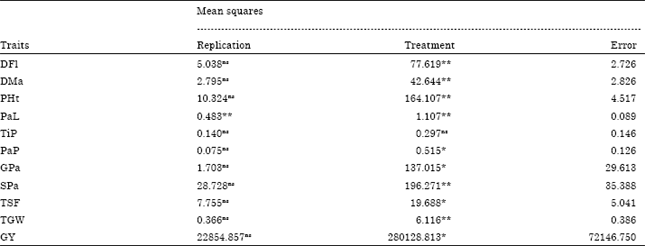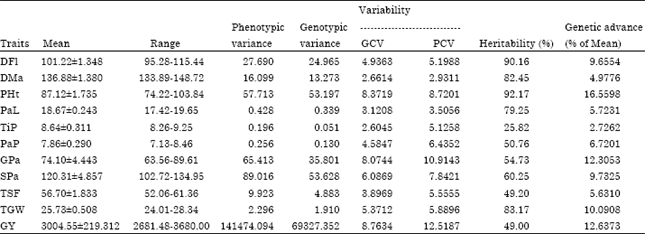Research Article
Genetic Variability, Heritability, Correlation Coefficient and Path Analysis for Yield and Yield Related Traits in Upland Rice (Oryza sativa L.)
Department of Horticulture and Plant Science, College of Agriculture and Veterinary Medicine, Jimma University, P. O. Box 307, Jimma, Ethiopia
Sentayehu Alamerew
Department of Horticulture and Plant Science, College of Agriculture and Veterinary Medicine, Jimma University, P. O. Box 307, Jimma, Ethiopia
Kassahun Bantte
Department of Horticulture and Plant Science, College of Agriculture and Veterinary Medicine, Jimma University, P. O. Box 307, Jimma, Ethiopia













